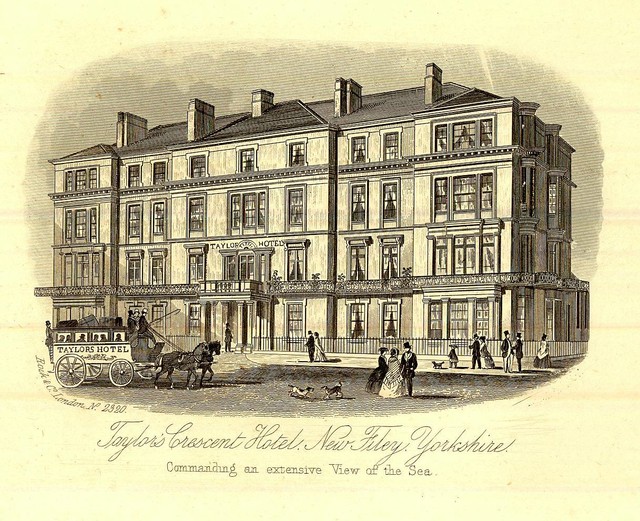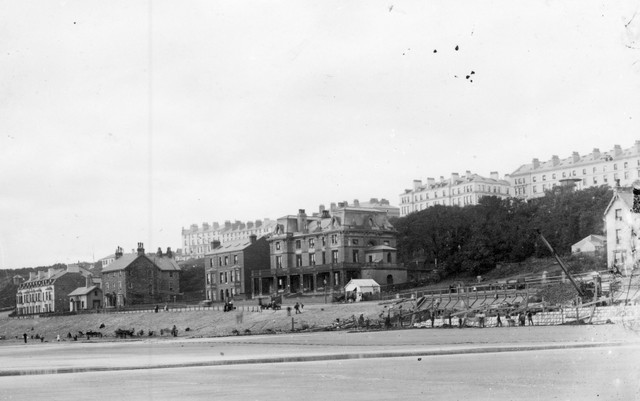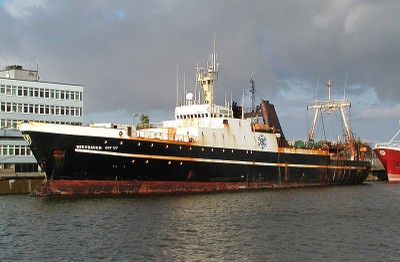
Menu:
The Industrial Age
Historians,
economists and sociologists have argued about the origins of the
industrial revolution for decades and these pages have no ambition to
solve or even enter this debate. The facts of social change that were
brought about by industrialisation; urbanisation, mass migration of
the population to towns and cities, huge workforces in factories, and
expansion of transport for goods and people are not in dispute.
As the census of 1841 showed over a fifth of the workforce were employed in farming or fisheries. In every census after 1841 this proportion of the workforce declined. (source ONS) Manufacturing employed over 30% of the working population until the 1960s when this also declined and has been overhauled by the service sector as productive capacity is either exported to areas of cheap labour or has been transformed by highly automated production.
Filey's population grew with spectacular speed during the 19th Century, but this was not the result of classic urbanisation where people moved into towns for factory work. The expansion of the “new” town with the development of the Crescent in the period from 1830 to 1859 brought the wealthy to Filey and they both holidayed and settled here. One of the key technologies of the industrial revolution, the steam railway came to Filey in October 1846, making the town easily accessible from the whole of the North of England.

Tourists came then, as they do now, as it offered peace and quiet compared to the brasher resorts of Scarborough and Bridlington, because of the superb beach, high quality accommodation and beautiful surroundings.
Through the 19th Century as Filey grew, the techniques used in the local fishing industry changed very little. Sailing Cobles and Yawls could still be seen in Filey Bay until almost the end of the First World War.
It was only at the very end of the 19th Century that steel hulled vessels began to ply the North Sea and the first powered Coble put to sea in 1913.
Filey came close to becoming an industrial fishing port late in the 19th Century with, in 1888, a proposal to build a very large harbour, prison, processing factory and rail terminus. Perhaps due to Filey's importance as a recreation space for the wealthy and powerful this plan did not materialise, with a sea wall being constructed instead in 1890-4.

Building the sea wall in 1890. Copyright © Crimlisk - Fisher Archive
As the census of 1841 showed over a fifth of the workforce were employed in farming or fisheries. In every census after 1841 this proportion of the workforce declined. (source ONS) Manufacturing employed over 30% of the working population until the 1960s when this also declined and has been overhauled by the service sector as productive capacity is either exported to areas of cheap labour or has been transformed by highly automated production.
Filey's population grew with spectacular speed during the 19th Century, but this was not the result of classic urbanisation where people moved into towns for factory work. The expansion of the “new” town with the development of the Crescent in the period from 1830 to 1859 brought the wealthy to Filey and they both holidayed and settled here. One of the key technologies of the industrial revolution, the steam railway came to Filey in October 1846, making the town easily accessible from the whole of the North of England.

Taylors Crescent Hotel circa 1850. Copyright © Crimlisk - Fisher Archive
Tourists came then, as they do now, as it offered peace and quiet compared to the brasher resorts of Scarborough and Bridlington, because of the superb beach, high quality accommodation and beautiful surroundings.
Through the 19th Century as Filey grew, the techniques used in the local fishing industry changed very little. Sailing Cobles and Yawls could still be seen in Filey Bay until almost the end of the First World War.
It was only at the very end of the 19th Century that steel hulled vessels began to ply the North Sea and the first powered Coble put to sea in 1913.
Filey came close to becoming an industrial fishing port late in the 19th Century with, in 1888, a proposal to build a very large harbour, prison, processing factory and rail terminus. Perhaps due to Filey's importance as a recreation space for the wealthy and powerful this plan did not materialise, with a sea wall being constructed instead in 1890-4.

Building the sea wall in 1890. Copyright © Crimlisk - Fisher Archive
By 1914 Filey's fishing industry had reached a low ebb but the onset of the Great War gave the stocks of fish on the North Sea fishing grounds a chance to recover.
The formation of the Filey United Fishing Company by Richard “Clicker” Cammish took place at this time with shareholders from across all the fishing related trades in the town, including not just boat builders but also those supplying the provisions for the vessels. A successful parliamentary petition in 1915 allowed trawling in Filey Bay, deemed to be in the national interest “for the duration of the war”.
Fishing suffered greatly during the inter war years as the depression reduced consumer demand for fish. Many Filey based vessels fell into disrepair.
Many fishing vessels were commandeered by the military during the Second World War, but fish once again became of national importance for the war effort as a food.
The period of greatest change in the fishing industry was to come about after the second world war with the introduction huge refrigerated factory trawlers, the use of radar to locate shoals of fish and a massive decline in the fishing stocks.

The Polish Factory Trawler Weisbaden in 2006 Source: Wikipedia
© Crimlisk - Fisher Archive
Written by B Mulrine and S Pinder.
Written by B Mulrine and S Pinder.